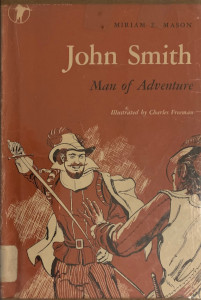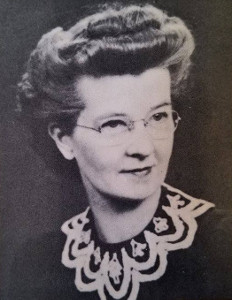John Smith: Man of Adventure

Author:
Miriam E. Mason
Illustrator:
Charles Freeman
Publication:
1958 by Houghton Mifflin Company
Genre:
Biography
Series:
Piper Books ![]() Members Only
Members Only
Current state:
This book has been evaluated and information added. It has been read but content considerations may not be complete.
Book Guide
Search for this book used on:
Author's Note
How do you know those things happened to John Smith so long ago? Did he really say those very words? Did he really ride a cow? In a biography, how much is really true, and how much is make-believe?
Many times children have asked me questions like these, both in letters and in person. Here is my answer:
Some details in a life are basic facts, and a writer must be very careful and very accurate with them. Dates, figures, places, real historical happenings must be checked carefully and written as correctly as possible. The biography writer must do a great deal of reading in books of history, geography, biography, science, and every field which touches the life of the subject. We are lucky in that we have wonderful libraries built up through the years by careful writers.
There must be a starting point, so I begin with the year my subject was born, and the place. What sort of home and parents did he have, how many brothers and sisters? Where did he go to school? What are the big achievements which make him remembered?
These are all factual details; and if a writer will dig into the books and learn every single thing he can learn about these factual details, he has a strong framework of truth.
Once you have this strong framework you can imagine a little, guess a bit. The truth you have will help your imagination to be pretty close to the truth. Most of the conversations in a biography are imagined. The author uses direct quotations because they are an interesting way to tell something. But there, again, the author must be very careful that the imaginary conversation or the imaginary happening is true to life.
We know the big things John Smith did with his life. We can be pretty sure that as a boy he was thrilled by the exciting times in which he lived. Reading the books John Smith wrote gives an author an idea of the way he would have talked.
Have you ever visited a big museum an see how the careful scientists build up, or "recreate" an entire creature from only a few bones? Those few real bones are the framework of fact, the manufactured parts which look so real are the make-believe. Together they bring to life a part of the past.
So by careful study and careful writing, by a framework of actual facts filled in here and there by imagination, the author brings before you a great person who has helped to make the country in which you live. He seems very real to the author who has been searching out all the facts of his life and has been putting them together with a little imagination for decoration.
May he seem just as real to you, who are like him in at least one way—you are young in a very exciting time!
~Miriam E. Mason
Content Guide
Please sign in to access all of the topics associated with this book and view other books with the same topics.
Please sign in to access the locations this book takes place in and view other books in the same location.
Please sign in to access the time periods this book takes place in and view other books in the same time period.
Find This Book
Search for this book used on:



